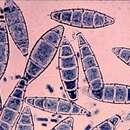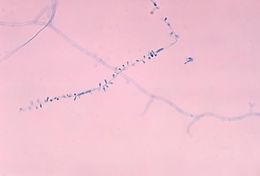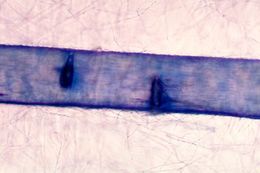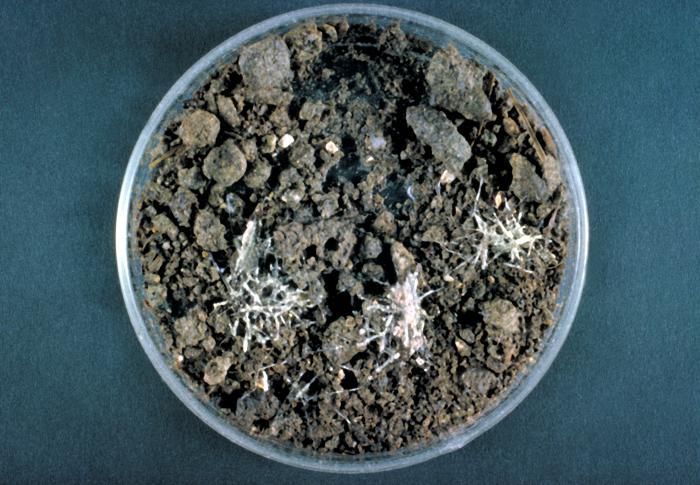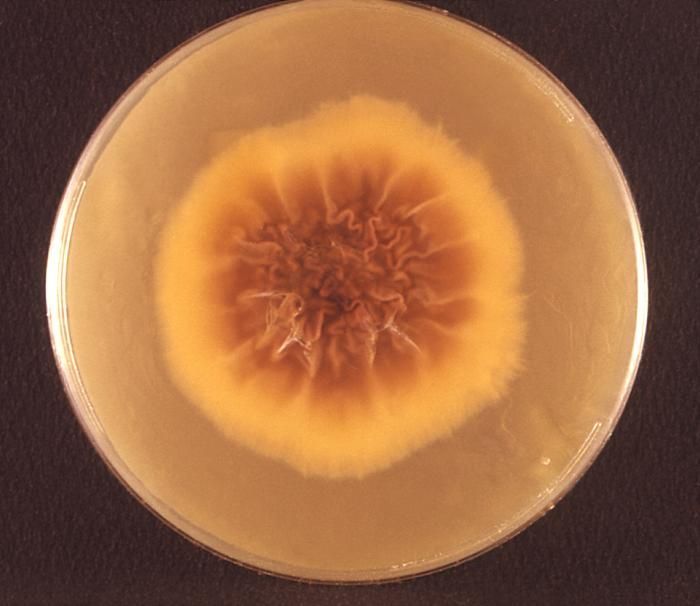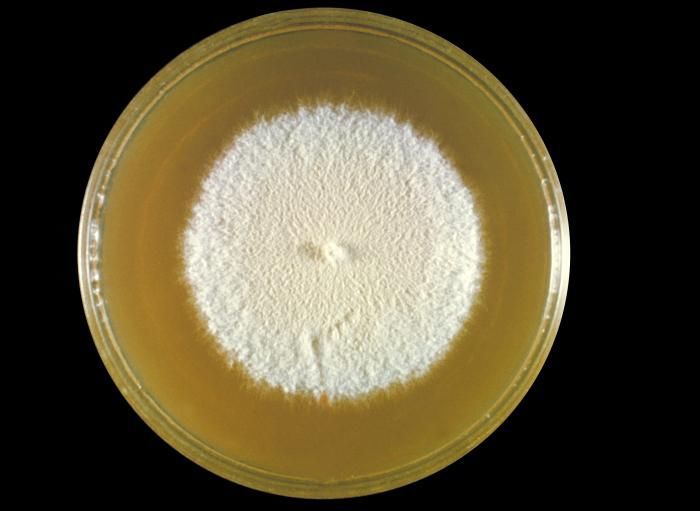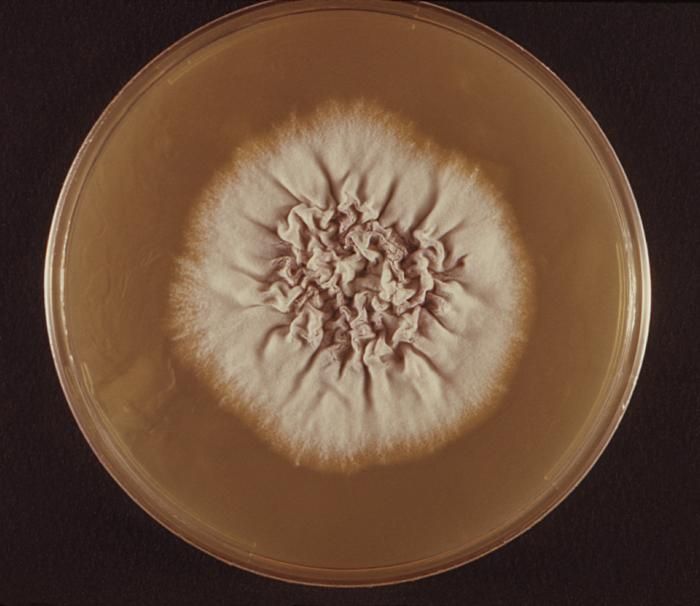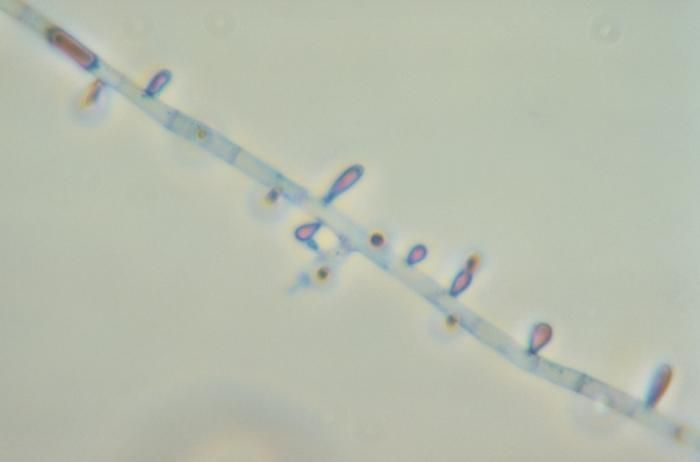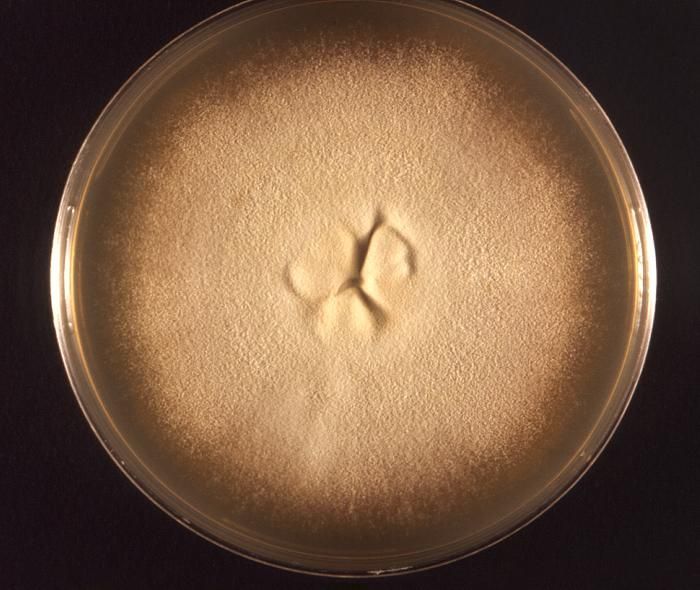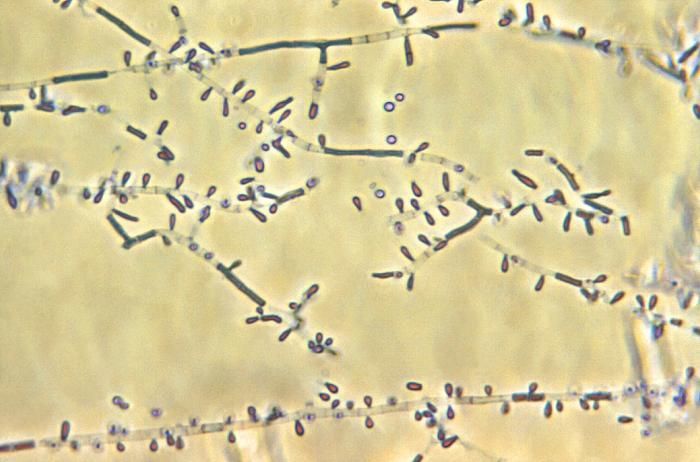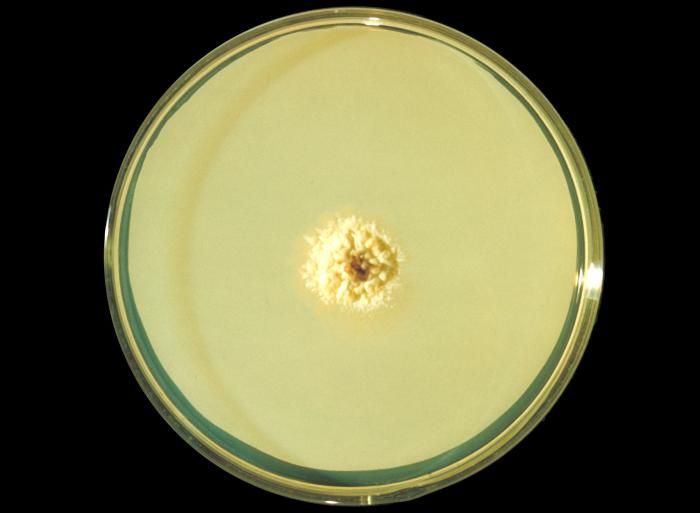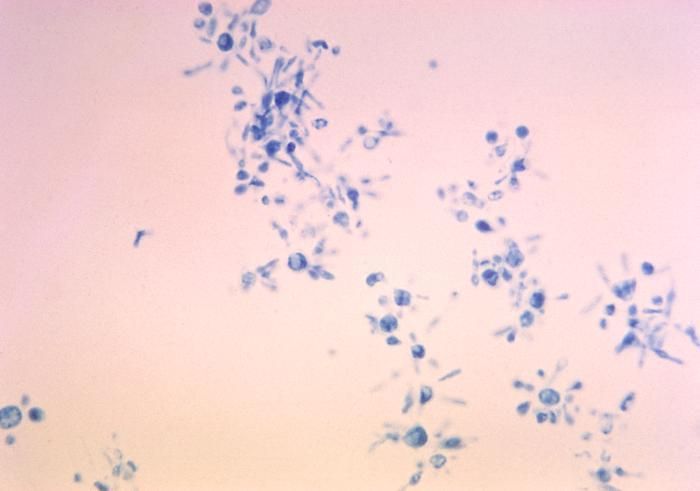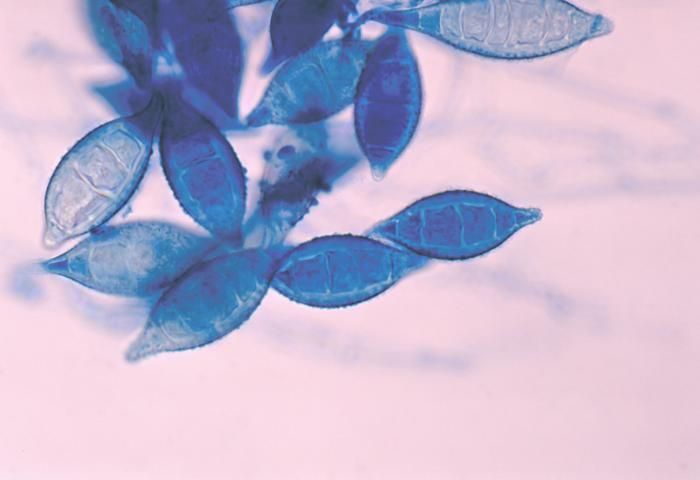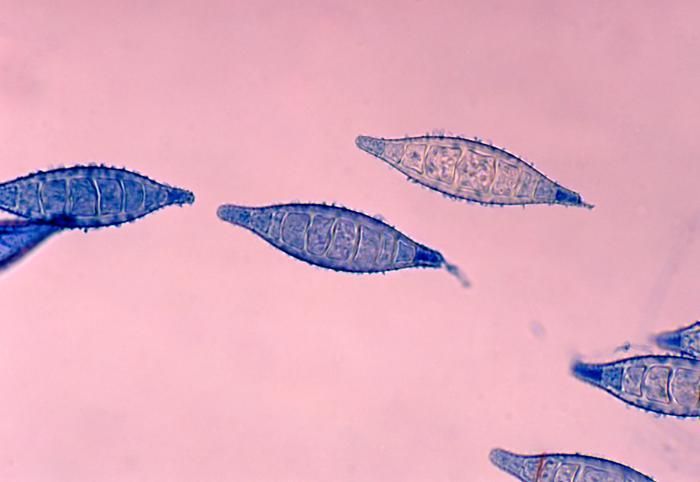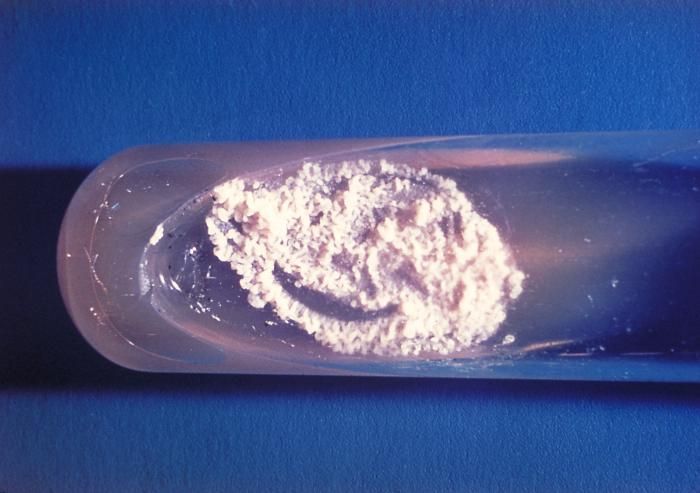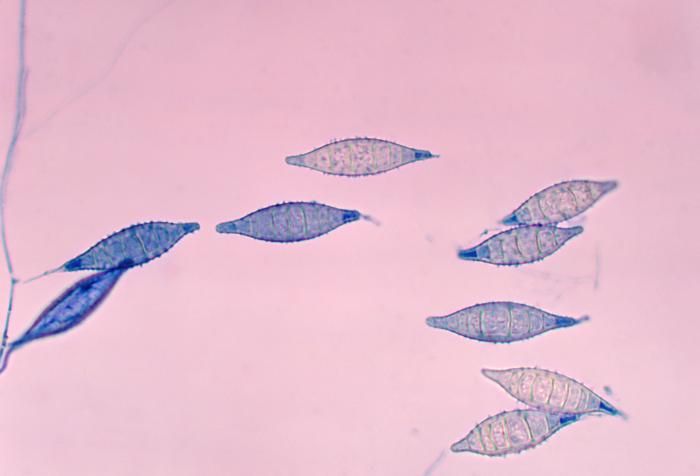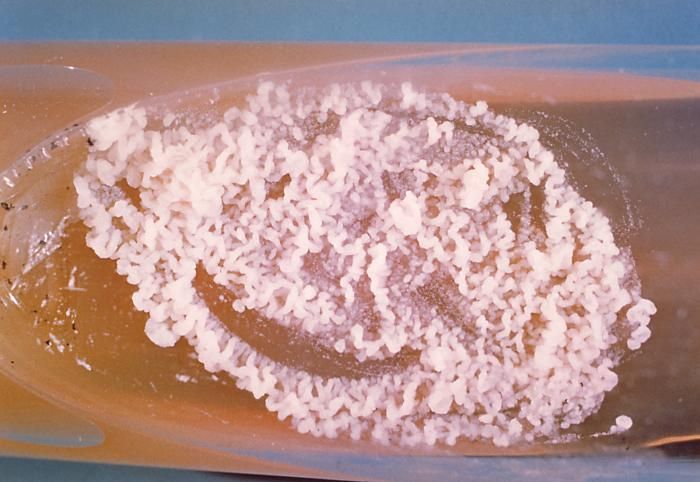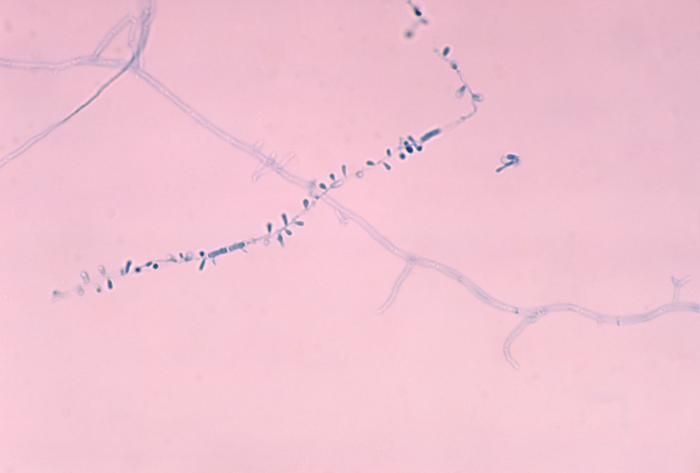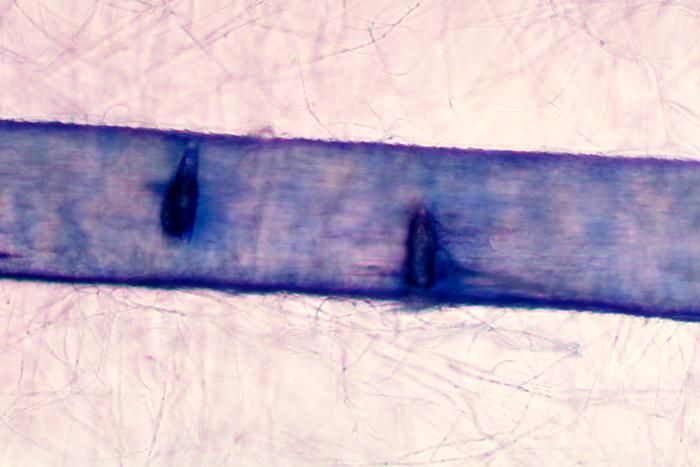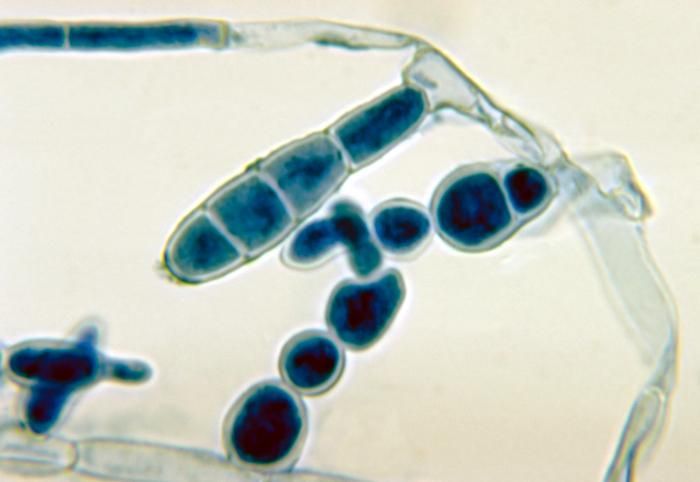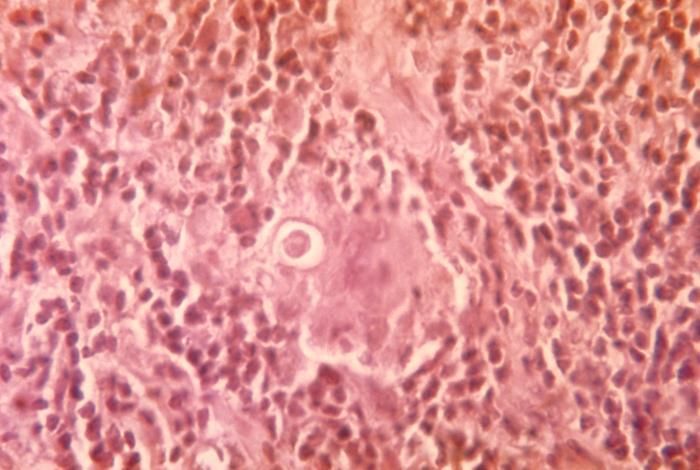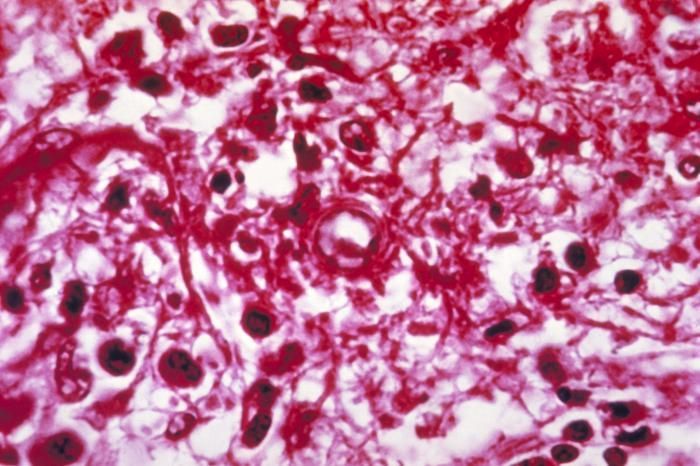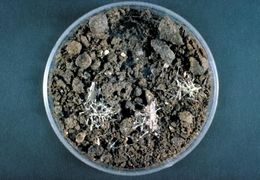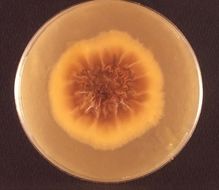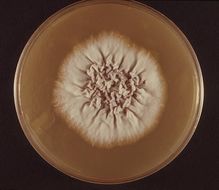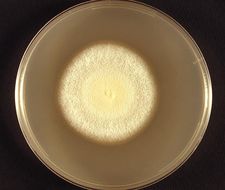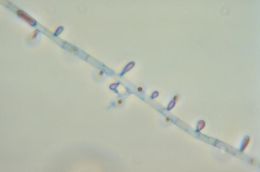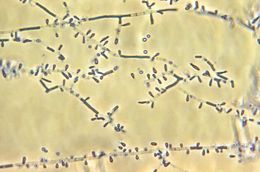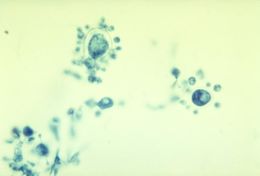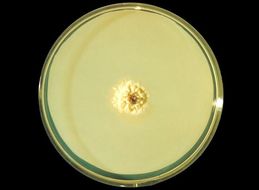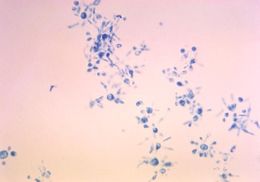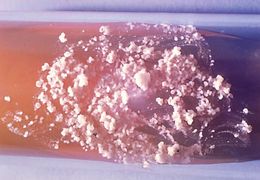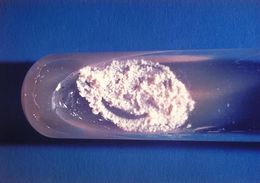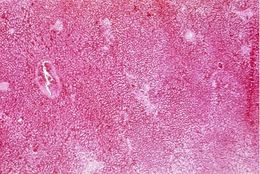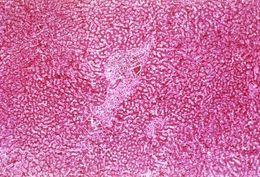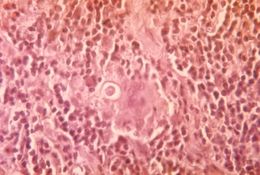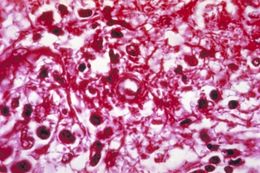-
This is a photograph of a hair plate culture of the fungus Histoplasma capsulatum.Created: 1963
-
This photograph depicts the reverse view of a Petri dish within which fungal colonies of Trichophyton rubrum var. granulare had been cultured. From the front, (see PHIL 10540) the colonial morphology, which in the case of T. rubrum is said to be waxy, glaborous, i.e., flat to cottony, and display from a frontal perspective, a white to bright yellowish-beige, and even a red-violet coloration. From this reverse view, the colonies display a coloration that is a light yellowish to brown, or a reddish brown.Created: 1972
-
This was a plate culture of the fungus Chrysosporium keratinophilum.Created: 1963
-
This photograph depicts the frontal view of a Petri dish within which fungal colonies of Trichophyton rubrum var. granulare had been cultured. Revealed is the colonial morphology, which in the case of T. rubrum is said to be waxy, glaborous, i.e., flat to cottony, and display from a frontal perspective, a white to bright yellowish-beige, and even a red-violet coloration. From the reverse (see PHIL 10541) or from the back, the colonies display a coloration that is a light yellowish to brown, or a reddish brown.Created: 1972
-
This photomicrograph revealed some of the morphology exhibited by a Trichophyton tonsurans fungal colony. Note the glaborous, or smooth velvety appearance of this colony, and early changes at its center, which in time will lead to its characteristically raised appearance, as well as its yellowish-beige colorationT. tonsurans and T. rubrum are two common dermatophytes. These two species are usually transmitted from person to person. Another common dermatophyte is Microsporum canis, which is transmitted from animals, including cats and dogs, to people. Dermatophytes like to live on moist areas of the skin, such as places where there are skin folds. They can also contaminate items in the environment, such as clothing, towels and bedding.Created: 1974
-
This photomicrograph reveals the microconidia of the fungus Trichophyton rubrum.Created: 1973
-
This photomicrograph revealed some of the morphology exhibited by a Trichophyton tonsurans fungal colony. Note the glaborous, or smooth velvety appearance of this colony, and its characteristically raised center, and yellowish-beige colorationT. tonsurans and T. rubrum are two common dermatophytes. These two species are usually transmitted from person to person. Another common dermatophyte is Microsporum canis, which is transmitted from animals such as cats and dogs to people. Dermatophytes like to live on moist areas of the skin, such as places where there are skin folds. They can also contaminate items in the environment, such as clothing, towels and bedding.Created: 1974
-
This photomicrograph reveals the microconidia of the fungus Trichophyton rubrum.Created: 1973
-
This photomicrograph depicts budding cells of the fungus Paracoccidioides brasiliensis during its yeast phase.Created: 1963
-
This was a Sabouraud's dextrose agar plate culture of the anthrophilic dermatophyteTrichophyton yaoundei at wk. 6.Created: 1962
-
This photomicrograph depicts budding cells of the fungus Paracoccidioides brasiliensis during its yeast phase.Created: 1963
-
This photomicrograph shows a number of Arthroderma otae, formerly Nannizzia otae, fungal macroconidia.Created: 1978
-
This is a slant culture growing the fungus Paracoccidioides brasiliensis during its yeast phase.Created: 1963
-
This photomicrograph shows a number of Arthroderma otae, formerly Nannizzia otae, fungal macroconidia.Created: 1978
-
This is a slant culture growing the fungus Paracoccidioides brasiliensis during its yeast phase.Created: 1963
-
This photomicrograph shows a number of Arthroderma otae, formerly Nannizzia otae, fungal macroconidia.Created: 1978
-
This is a slant culture growing the fungus Paracoccidioides brasiliensis during its yeast phase.Created: 1963
-
This photomicrograph shows a number of microconidia of the fungus Arthroderma otae, formerly Nannizzia otae.Created: 1978
-
This photomicrograph reveals the histopathologic chronic inflammatory changes associated with paracoccidioidomycosis.Created: 1963
-
This micrograph reveals the hair perforation caused by the fungus Arthroderma otae, formerly Nannizzia otae.Created: 1978
-
This photomicrograph reveals the histopathologic chronic inflammatory changes associated with paracoccidioidomycosis.Created: 1963
-
This photomicrograph reveals a number of macroconidia of the dermatophytic fungus Epidermophyton floccosum.Created: 1972
-
Note the histopathologic changes seen in paracoccidioidomycosis. A P. brasiliensis conidium is visible at center.Created: 1963
-
This micrograph depicts the histopathologic changes associated with paracoccidioidomycosis due to P. brasiliensis.Created: 1963

